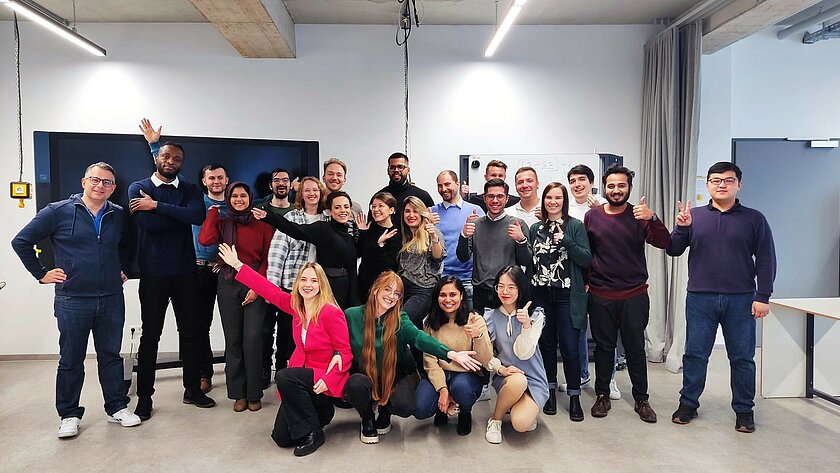Participants from the Master of Digital Transformation and Global Entrepreneurship (DTE) and Master of Digital Innovation Management (DIM) programs worked in detail on four companies in four fully international teams: BMW, LinkedIn, Starbucks and Adidas. They were guided by the roadmap for digital transformation, Digital Reality, Digital Ambition, Digital Potential, Digital Fit and Digital Implementation, which is divided into five phases.
Digital transformation of business models in four use cases
Team Adidas had developed a new footwear product line with a fully customizable design where each unique footwear design can be selected with a digital component. The shoe includes sensors for performance tracking and IoT connections with other external platforms, along with some gamification aspects. Future revenue streams are expected to include additional options for customization of the shoe in addition to traditional shoe sales; there is also an option for performance tracking and data insight in the form of a subscription model.
Team BMW aimed to improve the BMW digital sales experience. To do this, they extended the existing business model and developed an AI-based customer journey avatar vision that guides customers through the entire sales and aftersales process. The team aims to contribute to BMW's sales strategy and respond to changing customer expectations in the automotive industry.
The third team had analyzed Starbucks' digital strategy in depth, focusing on the importance of customers to the company's digital approach. Students evaluated options for the company's digital strategy and developed ideas for each option, focusing on the needs and preferences of future customers. The team developed a system that included IoT and blockchain, deposit and bonus system, and quality management, and presented a step-by-step plan for its implementation.
The fourth group had digitized LinkedIn's business model and moved it into a new era of the recruitment process: the New Age(H)R. This future model is powered by increasingly popular technologies such as AI, blockchain, and AR/VR, and fully digitizes the hiring and job search process to provide a seamless, highly customized experience. In their work, students assumed that such approaches and developments will maintain LinkedIn as a leading platform and enable new opportunities for the future business networking space.
Working with the digital transformation roadmap: helpful for the future
The students found the Digital Transformation and Entrepreneurship module and working with the digital roadmap both enjoyable and educational. Working on the use cases enabled them to develop new areas of knowledge and skills that they can use in the future.







